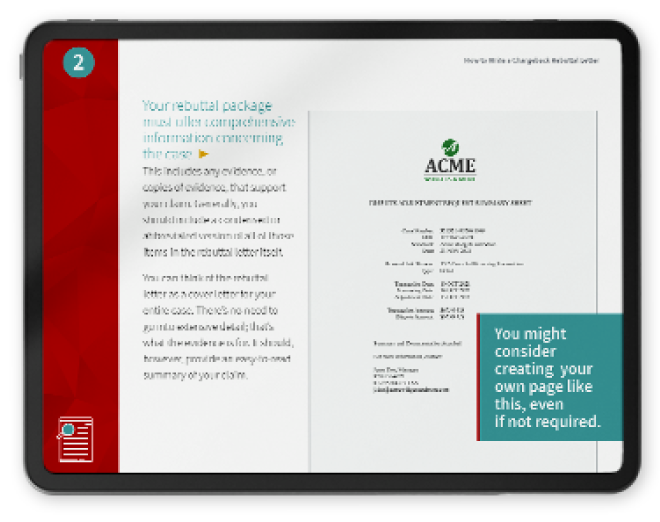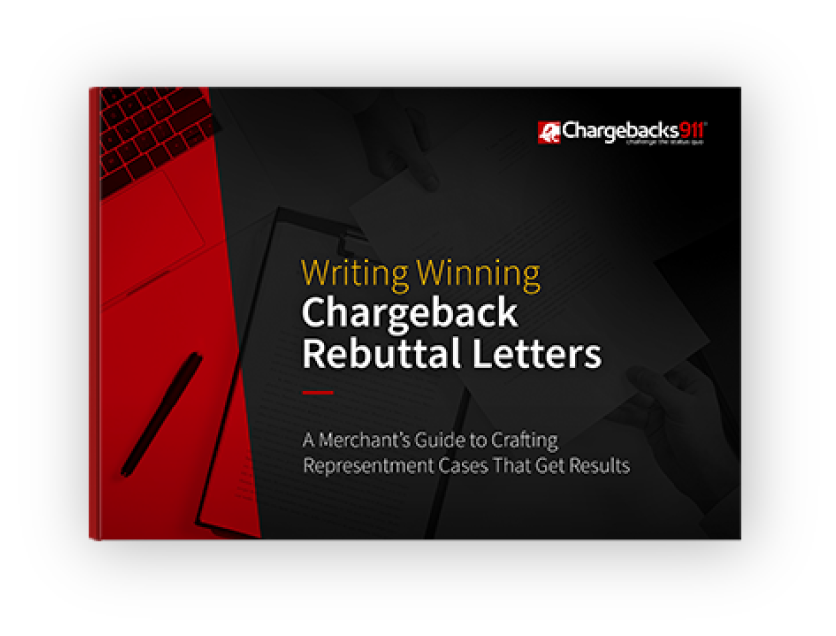Getting Started With Merchant Chargeback Protection
You’ve heard it before, but it’s worth repeating: merchant chargebacks are a serious and growing threat to eCommerce.
Chargebacks drain your revenue, create unnecessary work, and damage your relationships with customers and banks. Left unchecked, chargeback can even threaten your ability to process payments altogether.
We have good news, though: the right chargeback prevention steps can dramatically reduce the risk posed by disputes. In fact, preventing chargebacks may be the single best thing you can do to protect your revenue and set up your business for long-term sustainability. So, in this post, we’ll explore the threat of chargebacks, and look at ways you can best mitigate the risk they pose.
Recommended reading
- Chargeback Automation | Better Dispute Management
- Revenue Recovery: Tips & Best Practices to Reclaim Money
- What’s an “Acceptable” Chargeback Rate? Why Does it Matter?
- Chargeback Accounting: How it Works | Tips & Best Practices
- Chargeback Reduction Plan: a Guide to Develop Your Strategy
- Chargeback Reports | Use Past Data to Stop Future Disputes
What are Merchant Chargebacks?
Before we dive into chargeback protection, let’s make sure we have a firm grasp on the basics.
Merchant chargebacks start when a customer disputes a transaction. They’re basically saying “Hey! I didn’t make this purchase! It must be fraud!” Whether it actually is or isn’t fraud, their bank’s first move will be to reverse the charge and refund the money back to the customer’s account.
Learn more about chargebacksIMPORTANT!
The chargeback process is a federally mandated form of consumer protection. It ensures that buyers have recourse if they receive faulty products, are charged incorrectly, or fall victim to fraud. It serves an important function, but it’s easily misused.
Who Pays the Price for Merchant Chargebacks?
OK. So chargebacks are an important financial safety net. But they’re also expensive and time-consuming for merchants.
Is that intentional? Actually, yes.
The original idea behind the chargeback system was that cardholders needed some way of recovering money lost due to fraud or abuse. That would foster trust in the payment ecosystem and bolster consumer confidence, increasing credit card use. For that to work, however, the safeguard couldn’t be something the cardholder had to pay for.
Since merchants were supposed to provide fair service and data security, it made a certain amount of sense that chargeback liability would fall to them. The bank will take responsibility in some cases, but the general rule is that if you caused the chargeback, you have to pay for it. That gave merchants an added incentive to provide quality service.
For many years, the system worked as designed. While imperfect, the chargeback process helps maintain a balance between consumer protection and merchant accountability. So what changed?
In a word, technology.
The chargeback system was created half a century ago; long before eCommerce and the internet. Today, the majority of chargebacks aren’t the result of either fraud or abuse. Instead, they stem from accidental (or intentional) abuse of the process.
For consumers who really need it, the system still works.When it’s misused, however, merchants get the short end of the stick. To make things fair, you also need to be considered as a stakeholder in this equation. And this is where merchant chargeback protection comes into play.
Why Merchant Chargeback Protection is Necessary
The financial burden of chargebacks is too great to ignore. Merchant chargebacks involve an entire series of complex, intricate workings between multiple parties (cardholders, banks, card networks, processors, etc.). This creates significant overhead for everyone, but especially for merchants.
Beyond the lost sale, as well as any merchandise shipped, you also get hit with an additional chargeback fee. There could be other long-term consequences, too, such as an increase in your payment processing costs. If the problem becomes large enough, there’s even the risk of losing your card payment privileges entirely. And, perhaps worst of all, chargebacks can be filed months after the original transaction, meaning they’re almost impossible to anticipate
So, what are your options? For starters, having merchant chargeback protection strategies in place gives you a major advantage. The chargeback process is built around very strict deadlines. The better your standard practices, the faster you can respond to claims.

This helps you stop many chargebacks before they are filed. It also puts you in a better position to contest any unjustified disputes and recover revenue. The right approach can help you maintain a positive relationship with banks, processors, and even your customers.
Merchant chargeback protections can help in another way, too. Over time, your data monitoring will generate more detailed and accurate chargeback feedback, all of which can be used to tweak your long-term identification and prevention strategies.
What Does Merchant Chargeback Protection Entail?
At its core, merchant chargeback protection isn’t one singular thing. Rather, it’s a set of tools and techniques that can be combined in different ways. Just like your business, though, chargebacks are complicated. There are several moving parts to consider; the trick is customizing your plan to best fit your operation.
With that in mind, let’s look at just a few best practices that can help protect your revenue from excessive chargebacks:
These are all good elements to consider, but again: merchant chargeback protection is never a “one-size-fits-all” solution. Specific coverage and strategies depend on business type, items sold, and your existing chargeback rate.
Let’s simplify things, since so many factors contribute to the type of chargeback protection you need. We can break things down into three basic steps: identify, fight, and prevent.
Step One: Identify Your Chargebacks
Fortified chargeback protection starts with clearly identifying and classifying the chargebacks you’re dealing with. It’s not just about knowing how many you have; it’s about understanding where they’re coming from and why they happen
#1 | Dive Deep into the Data
Closely analyzing your transaction data is a good first step that may highlight vulnerable policies or practices. In other words, things you can control. Look for patterns or connections, like any products, price tags, or payment methods that prove problematic more often.
#2 | Categorize Your Chargebacks
Chargebacks can stem from a wide range of factors. Criminal fraud, processing errors, and customer disputes are common triggers, but they’re certainly not the only ones. Each specific type needs a unique approach. Dividing them into categories enables you to tailor prevention strategies.
#3 | Use Internal Sources & Dispute Categories
Your own records and customer service logs can be a goldmine of information. If nothing else, the issuing bank provides a reason code for every chargeback filed, indicating the nature of the dispute. Understanding these codes is crucial, even when the code is not totally accurate.
#4 | Leverage Issuer Decline Data
Knowing why a card issuer rejected a sale gives you a better understanding of your declined transactions overall. Knowing where you’re losing sales lets you take preemptive measures against risky transactions.
#5 | Collaborate With Payment Processors
When it comes to uncovering likely chargeback triggers, your payment processor can be your best friend. They hate chargebacks, too, so most are willing to help by providing data you might not otherwise have.
By identifying and segmenting your chargebacks, you can paint a big picture and lay down a solid foundation for your chargeback protection strategy. Like most things in life, the more detailed your understanding, the better you’ll be able to define your goals and develop the most effective plan.
Intelligent Source Detection™ from Chargebacks911® is the industry’s only dynamic tool for comprehensive chargeback source detection. ISD uses a combination of machine learning and human forensic expertise to diagnose chargeback sources with more accuracy than any other solution on the market. Click here to learn more.
Step Two: Fight Chargebacks
Once you’ve segmented your chargebacks into categories, you may notice something rather annoying: the chargeback process is not always used properly. In fact, Visa estimates that roughly three-quarters of all chargebacks are actually cases of first-party misuse (commonly known as friendly fraud).The good news is that chargebacks aren’t always the final verdict. Rather than be the victim, you’ll have an opportunity to stand your ground and fight unjustified chargebacks. This is what we’re referring to when we talk about chargeback representment. Here are some of the elements:
#1 | Understand Representment
Chargeback representment is how merchants contest invalid claims. You’ll need to demonstrate that a transaction was legitimate (or the product or service was delivered as promised), meaning the customer’s dispute is not justified.
#2 | Gather Compelling Evidence
Winning a representment hinges on the quality of evidence you provide. Proof of delivery, transaction receipts, customer correspondence… collect any documentation that validates the transaction and negates the customer’s claim.
#3 | Create a Convincing Case
While it may be the most important element, you can’t just throw a lot of evidence at the issuer and expect to win. You must create a compelling case for each claim, clearly showing why the chargeback is unwarranted.
#4 | Timeliness is Key
Chargebacks come with strict deadlines, and meeting those deadlines is critical. Missing even one of the time windows could mean forfeiting your right to challenge the chargeback, no matter how strong your evidence may be.
Here’s one other thing to consider: Contesting bogus chargebacks does more than just protect your revenue. It also sends a message.
Representing invalid claims is like an announcement to the world that your business won’t be an easy target. This proactive stance should be an integral part of your overall chargeback protection strategy, since it will positively impact the reputation of your business, and may make would-be fraudsters try their tricks elsewhere.
Step Three: Prevent Chargebacks
You’ve identified and segmented your chargebacks by source. You’ve also started engaging in representment to respond to invalid chargebacks. Now, it’s time to take proactive measures to prevent chargebacks wherever possible.
As we’ve mentioned, chargebacks can cost big bucks and suck up time. The adage “an ounce of prevention is worth a pound of cure” really applies in this scenario. As we mentioned earlier, proactive prevention can be crucial. So here are some prevention suggestions:
#1 | Invest in Fraud Detection Tools
Use advanced fraud detection tools and filters to monitor transactions in real-time. The idea is stopping potentially fraudulent activities before they lead to a dispute.
#2 | Leverage Chargeback Alerts
Chargeback alerts notify you when a dispute is initiated. You get a “heads-up” to address — possibly resolve — issues directly with customers prior to a chargeback.
#3 | Use Order Insight & Consumer Clarity
Order Insight and Consumer Clarity both let you share transaction details with the customer’s bank in real time, clarifying any confusion and preventing disputes.
#4 | Inform Your Customers
Keep product descriptions and policies clear, accurate, and detailed to prevent chargebacks stemming from misunderstandings or lack of information.
#5 | Streamline Your Processes
Create payment, shipping, and return processes that are as smooth and transparent as possible. Hiccups in these areas can trigger chargebacks.
#6 | Learn from Every Dispute
Track key performance indicators for each case, looking at what worked and what didn’t. Use that info to strengthen your chargeback protection strategy.
All of the above suggestions can work to reduce the occurrence of chargebacks and drive a smoother customer experience. It’s an effective way of upping your bottom line… and who doesn’t love that?
In the end, it’s all about delivering a secure, transparent shopping environment. You know, making your store the kind of place where chargebacks are a rare exception, not the rule.
Need Additional Help?
It’s possible to handle all of your chargeback management in-house. You also have the option of outsourcing it to a specialist. The approach you take can vary based on the size of your business, the number of chargebacks you’re getting hit with, or other factors.
The benefit of DIY chargeback management is that it gives you direct control over the process. That’s a double-edged sword, though, since it means you have to take control of everything. That requires dedicated resources and expertise you may not have, and data analysis you may not be able to access.
Outsourcing to the best provider, on the other hand, can take chargebacks completely off your plate. Your disputes are in the hands of experts – the kinds who aren’t intimidated by the complexity of chargebacks because they deal with them on a daily basis.
You could even try a hybrid approach, handling some tasks yourself, while outsourcing the heavy-lifting to a third party. The best solution is the one that works for you, offering the best return on your investment.
Suffering from a heavy number of chargebacks every month? We’ve got the answers. Our highly customizable and scalable solutions can provide immediate chargeback reduction for merchants at any point in their journey. Contact us today to learn more.
FAQs
What happens when a merchant receives a chargeback?
When a merchant receives a chargeback, the disputed transaction amount is temporarily deducted from their account, and they are also charged a fee for chargeback processing. The merchant then has the opportunity to respond and submit evidence to contest the chargeback, and if successful, the funds are returned to their account. If not, the customer keeps the refunded amount.
What is a merchant chargeback?
Merchant chargebacks occur when a customer disputes a transaction, prompting their bank to reverse the charge and refund the money back to the customer’s account. This process is put in place as a form of consumer protection, ensuring that individuals have recourse if they receive faulty products, are charged incorrectly, or fall victim to fraud.
Do merchants usually fight chargebacks?
Whether or not a merchant chooses to fight a chargeback often depends on the specific circumstances of the transaction and their assessment of the situation. Some merchants actively challenge chargebacks if they believe they have sufficient evidence to win the dispute. Others may choose not to fight due to the resource-intensive nature of the representment process or if they deem the chances of winning to be low.
Do merchants ever win chargebacks?
Yes, merchants do win chargeback disputes. However, the success rate varies significantly depending on several factors, including the quality of evidence provided, the reason for the chargeback, and how well the merchant adheres to best practices and industry standards. Winning a chargeback can be challenging, and it requires a solid understanding of the process and meticulous documentation.














